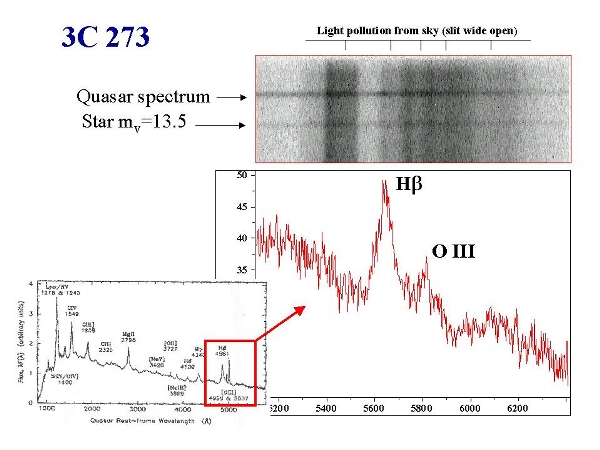EXTRAGALACTIC OBJECTS SPECTRA
Galaxies
- Seyfert -
- Quasar
Quasar spectra
Recording a Quasar spectrum is used to be, among amateur spectroscopists, a sort of sensitivity test for
their instruments. It is indeed a fascinating test, because with a small telescope with a cheap spectrographic equipment one can measure the speed of universe expansion.
The light coming to us from a Quasar, due to the great distance, is infact red-shifted of a huge amount,
even for the brighter quasars.

|
Picture 1: A part of the spectrum of 3C273 surrounding H b region recorded with 12 ┼ resolution (50 mm focusing optics, 600 l/mm grating, MX5 Starlight Xpress CCD. Telescope 0.6 m F/20). Exposure: 5x300 min . In the rough CCD image it can also be seen the effect of sky light pollution that is even more strong than quasar spectrum because of the wide opened (30") slit. In order to obtain the quasar spectrum, the dark frames have been recorded including sky background contribution.
|
In the picture above it is shown our recorded spectrum around H b region of 3C273 in Virgo and the spectrum is compared with the mean rest frame spectrum of a quasar.
The group of emission lines around 5000 ┼ (OIII 4959, 5007 ┼ and mainly H b - for some explanation about the origin of such lines see Seyfert galaxies) in the rest frame appears around 5600 ┼ that corresponds to a red-shift of about 16%. Thus 3c273 moves away from us at a speed that is 16% of that of light. If we take the Hubble constant H=71 Km/sec/Mpc we can calculate a distance of 2.2 billion light years.
Goto other extragalactic objects:
Normal Galaxies
- Seyfert
|
|

